
Haakon VII was King of Norway from November 1905 until his death in September 1957.
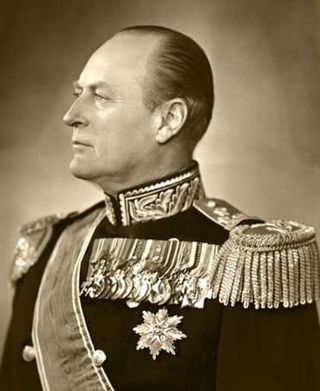
Olav V was King of Norway from 1957 until his death in 1991.

Harald V is King of Norway. He succeeded to the throne on 17 January 1991.

Haakon, Crown Prince of Norway is the heir apparent to the Norwegian throne. He is the only son of King Harald V and Queen Sonja.
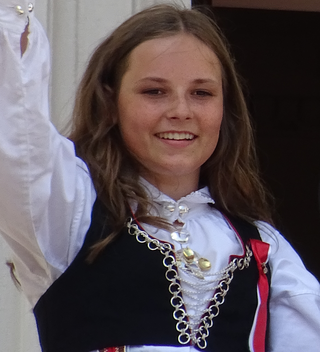
Princess Ingrid Alexandra of Norway is the eldest child of Crown Prince Haakon and Crown Princess Mette-Marit, and the grandchild of King Harald V. She is second in line of succession to the Norwegian throne after her father. She is expected to become the country's second female monarch, after the 15th-century Queen Margaret.
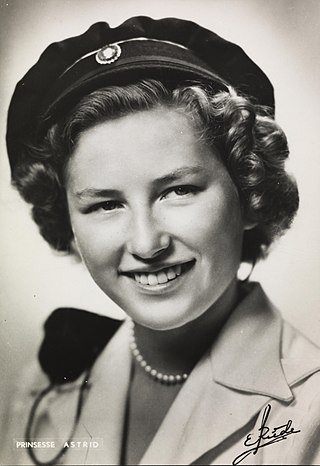
Princess Astrid, Mrs. Ferner is the second daughter of King Olav V and his wife, Princess Märtha of Sweden. She is the older sister of King Harald V of Norway and younger sister of the late Princess Ragnhild.

Prince Carl of Sweden and Norway, Duke of Västergötland was a Swedish prince. Through his daughters, for whom he arranged excellent dynastic marriages, he is an ancestor of several members of European royal houses today, including the reigning monarchs King Harald V of Norway, King Philippe of Belgium, and Grand Duke Henri of Luxembourg.

Prince Eugen Napoleon Nicolaus of Sweden and Norway, Duke of Närke was a Swedish painter, art collector, and patron of artists.
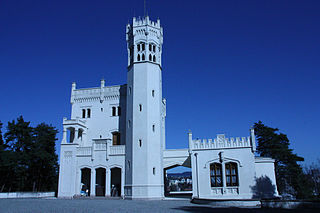
Oscarshall Palace is a maison de plaisance located in the small fjord Frognerkilen on Bygdøy in Oslo, Norway.

Princess Ragnhild, Mrs Lorentzen, was the eldest child of King Olav V of Norway and Princess Märtha of Sweden. She was the older sister of King Harald V and Princess Astrid. She was the first royal to have been born in Norway since the Middle Ages. In 1953 she married the industrialist Erling Lorentzen, a member of the Lorentzen family of shipping magnates. In the same year they moved to Brazil, where her husband was an industrialist and a main owner of Aracruz Celulose. She lived in Brazil until her death 59 years later.

The dissolution of the union between the kingdoms of Norway and Sweden under the House of Bernadotte, was set in motion by a resolution of the Storting on 7 June 1905. Following some months of tension and fear of an outbreak of war between the neighbouring kingdoms – and a Norwegian plebiscite held on 13 August which overwhelmingly backed dissolution – negotiations between the two governments led to Sweden's recognition of Norway as an independent constitutional monarchy on 26 October 1905. On that date, King Oscar II renounced his claim to the Norwegian throne, effectively dissolving the United Kingdoms of Sweden and Norway, and this event was swiftly followed, on 18 November, by the accession to the Norwegian throne of Prince Carl of Denmark, taking the name of Haakon VII.
The Kingdom of Norway as a unified realm dates to the reign of King Harald I Fairhair in the 9th century. His efforts in unifying the petty kingdoms of Norway resulted in the first known Norwegian central government. The country, however, soon fragmented and was collected into one entity in the first half of the 11th century, and Norway has retained a monarchy since that time. Traditionally, it has been viewed as being ruled by the Fairhair dynasty, though modern scholars question whether the eleventh century kings and their successors were truly descendants of Harald.
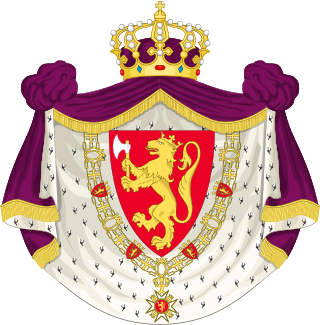
The coat of arms of Norway is the arms of dominion of king Harald V of Norway, and as such represents both the monarch and the kingdom. It depicts a standing golden lion on a red background, bearing a golden crown and axe with silver blade.
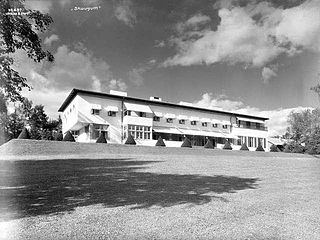
Skaugum is an estate, manor house and the official residence of Crown Prince Haakon of Norway and his wife Crown Princess Mette-Marit. The estate is located in Asker, 19 km (12 mi) southwest of Oslo, by the foot of the mountain Skaugumsåsen. The estate consists of 48 ha of agricultural lands and 50 ha of woodlands.

Arnstein Rynning Arneberg was a Norwegian architect. He was active professionally for 50 years and is often considered the leading architect in Norway of his time.

The Norwegian monarch is the head of state of Norway, which is a constitutional and hereditary monarchy with a parliamentary system. The Norwegian monarchy can trace its line back to the reign of Harald Fairhair and the previous petty kingdoms which were united to form Norway; it has been in unions with both Sweden and Denmark for long periods.

Bygdøy Royal Estate, also known as the Bygdø Royal Farm, is a Kongsgård estate and manor house that occupies a large part of the northwestern part of the Bygdøy peninsula in Oslo, Norway. It is the official summer residence of the King of Norway.
A referendum on retaining the monarchy or becoming a republic was held in Norway on 12 and 13 November 1905. Voters were asked whether they approved of the Storting's decision to authorise the government to make the offer of the throne of the newly self-ruling country. The Storting had wanted to offer the throne to Prince Carl of Denmark, but the prince insisted that the Norwegian people have a chance to decide whether they wanted to retain a monarchy.

Coronations in Norway were held from 1164 to 1906, mostly in the Nidaros Cathedral in Trondheim. Although a crowning ceremony was formerly mandated by the nation's constitution, this requirement was eliminated in 1908. However, Norwegian kings have since chosen voluntarily to take part in a ritual of "benediction" to mark their accession to the throne, during which the crown is present, but not physically bestowed upon the sovereign. The new ceremony retains some of the religious elements of earlier rites, while eliminating other features now considered to be "undemocratic".

Paléet was a monumental single storey townhouse located in the Norwegian capital Oslo that for a long time functioned as a residence for the Norwegian royalty.



























